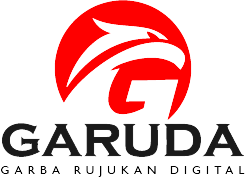INTEREST SINGLE DIGIT (Target dua tahun Pemerintahan Jokowi-JK)
DOI:
https://doi.org/10.34127/jrakt.v2i1.40Abstract
iSingle Digit is one number before comma in loan interest rate which belongs to Indonesian Government. This program relates to some matters such as reducing LPS guaranteed deposit rate, BI rate, operational costs, and NPL. Loan collectibility influenced NPL in some categories Current, Special Mention, Substandard, Doubful, Loss. These loan collectibility categories are being used to calculate Activa Productive, and CAR. If the collectibility is getting lower, a bank will have to allocate more funds with BI as the Activa Productive increase. This condition has negative impacts on intermediary function of a bank. Percentage of bank industries in July 2015 and July 2016 (yoy) for CAR were 20.78% and 23.19%; NIM 5.59% and 5.32%; LDR 5.32% and 5.59%; NPL 2.95% and 3.22%.
BI rate decreased from 7.75 bps to 5.75 bps in October 2016, meanwhile loan interest rate was 13.8% which was still higher than government target. This fact meant that change in loan interest rate was not really influenced by the decreasing BI rate.
Every less digit of loan interest rate has positive impact to business and economy. Stakeholders such as society, government, OJK, BI, LPS and banking industry must be involved to decreasing loan rate more effectively. The effectiveness of this policy would be at stake if it only considers one aspect of stakeholders.
The complex and highly regulated condition of banking industry based on its past performance would determine the loan interest rate established. Reduction of loan interest rate could be more efficient by decreasing spread between bank’s deposit rate and BI rate.
Money Market and Capital Market affected the role of banking industry negatively in its efforts to implementing the monetary policy. Capital market instruments such as SUN of 5 year period offering 7% – 8% coupon has made the disparity between the coupon and bank deposit rate wide enough to cause cash flow out of the banks.
Nowadays, Bank is in the right time to do some efforts to increasing their efficiency. Monetary authority controls inflation so that the inflation would be lower, that means positive to banking industry.
Bank as a business institution has profit orientation to get have trust from its stakeholders. It must be careful in decreasing loan interest rate even though BI rate has already decreased. In contrary, if BI rate increased bank should increase loan interest rate while managing the debtor risks. The bank can use strategy by decreasing transaction costs and NPL or known as 5 C + 4 P + 3 R.
In October 2016, ratio of loan taken from deposit was 90.19%. This situation indicated that banking industry had limitation to expand to other productive sectors. Ironically, bank loans focused more on long term financing with higher risks such as infrastructure and plantation that cannot be profitable in short term.
iSingle Digit policy can be used to solve bank’s internal and external problems. This policy can work effectively only if regulation and efficiency of banking industry has been improved.
In many countries, banking industry failure to run their intermediary function has caused monetary crisis. Every stakeholder must cooperate each other to help bank running their intermediary function, so that iSingle Digit policy can work effectively and in balance to support Indonesia economy sectors.
References
Bank dan Lembaga Keuangan, Kasmir, RajaGrafindo, 2015
Multinational Financial Management, Alan C. Shapiro, Prentice Hall, New York, 2014
Banking Systems, Center For Financial Training, South Western, USA, 2010.





